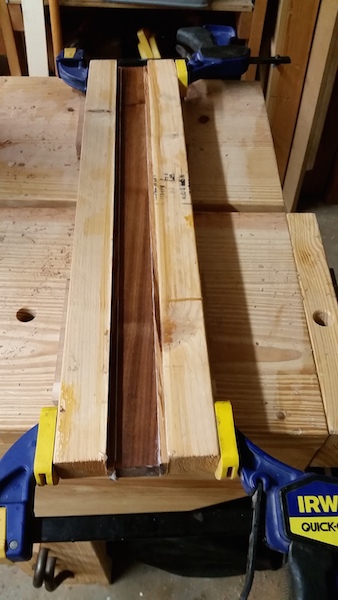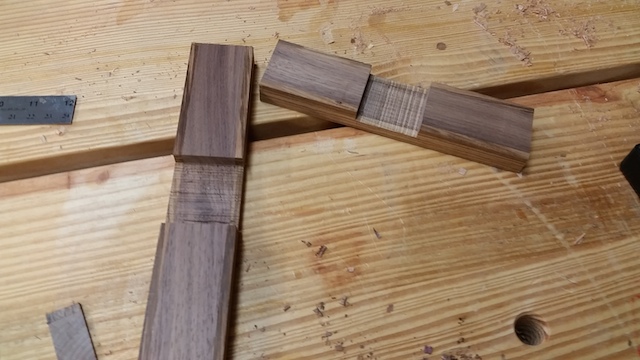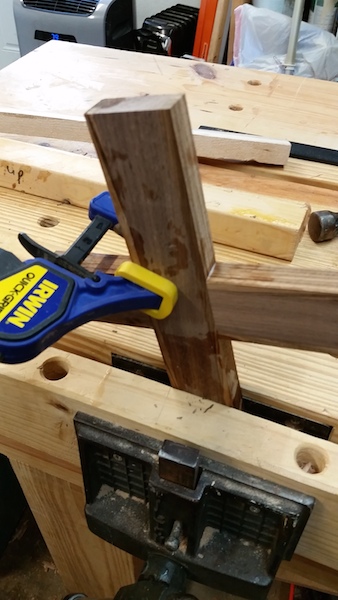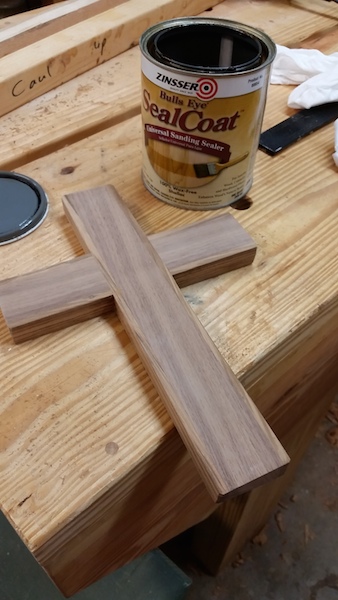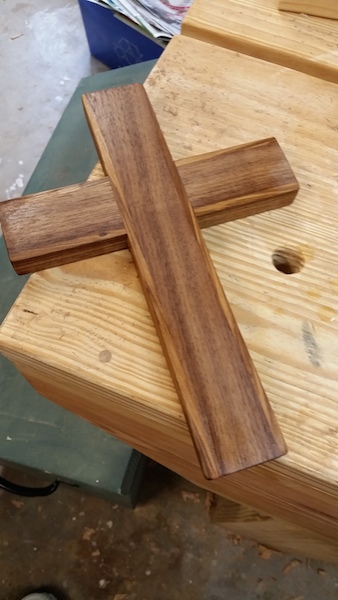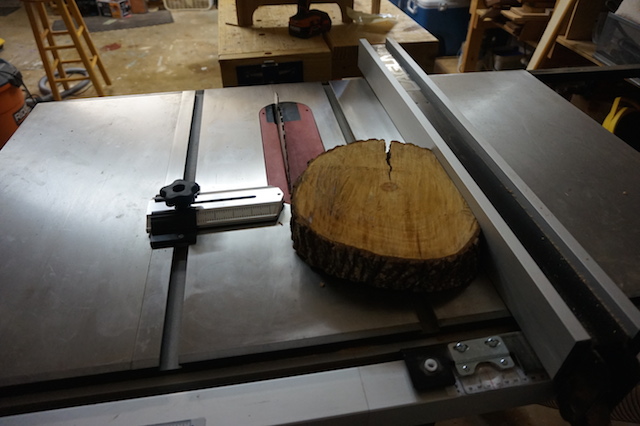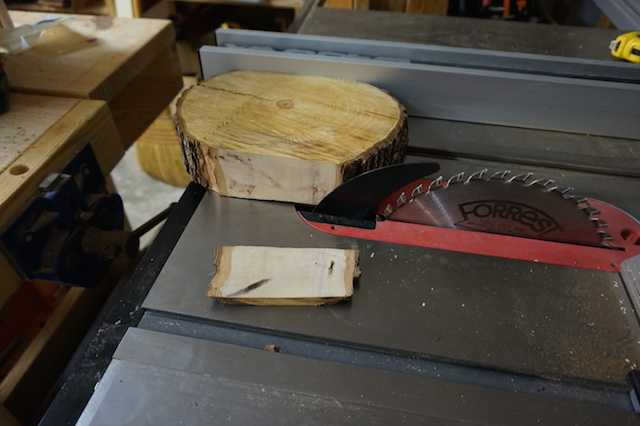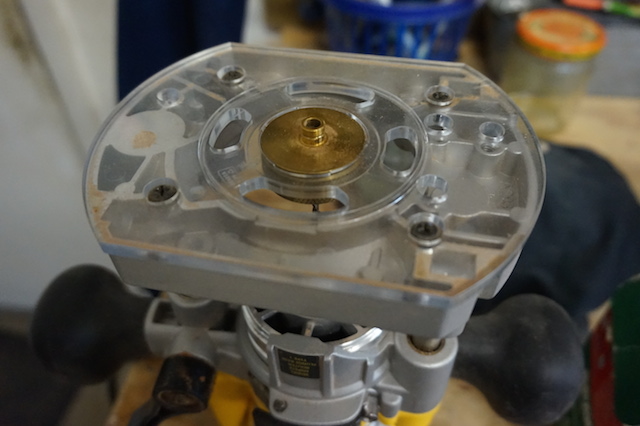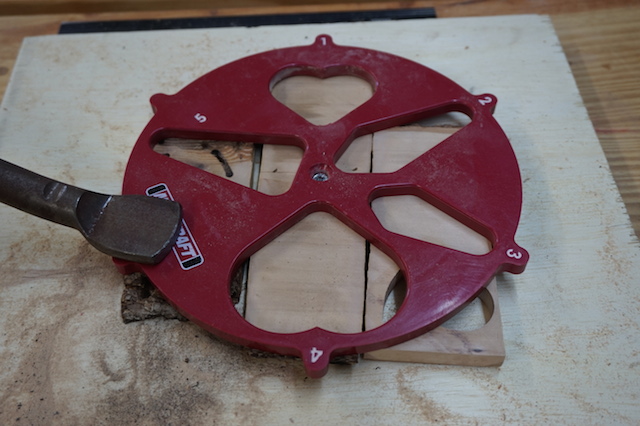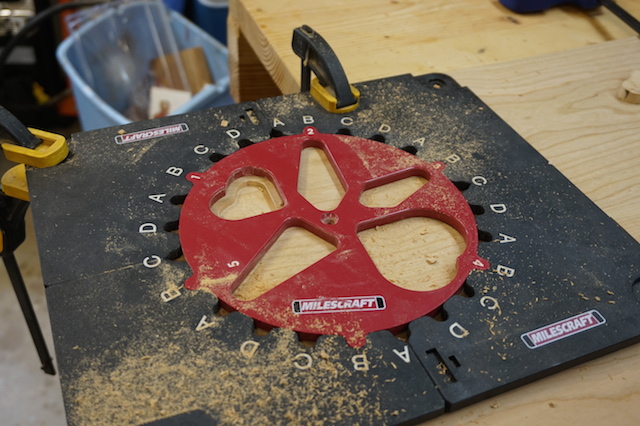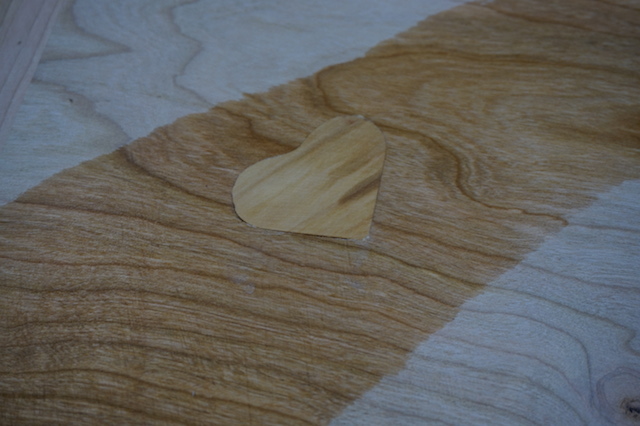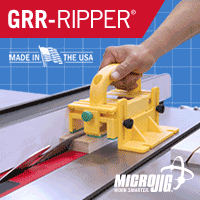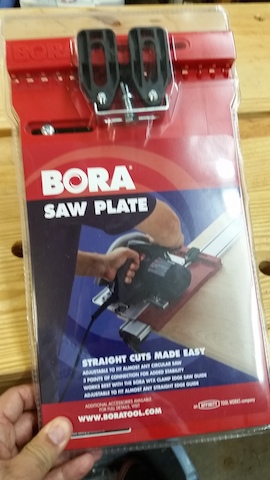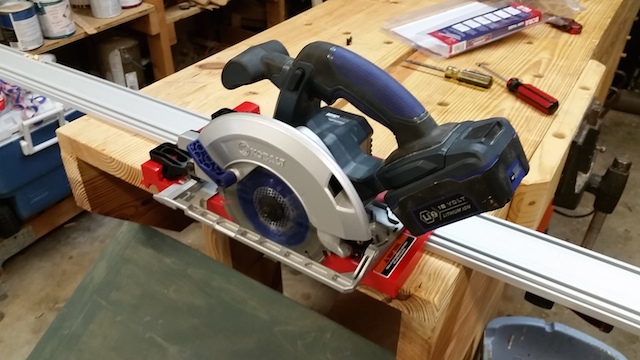I love to quote movie lines. Ask Rhonda. She’ll tell you.
- Open the pod bay door, HAL.
- We have both kinds of music – country and western.
- We’re going to need a bigger boat.
After a while, she will just roll her eyes and walk off into another room. Good for her!
One of my favorites to throw around is from the movie The Sandlot. Whenever someone is giving me a hard time at work, I always have to counter with the line made famous by the movie’s character Ham Porter:
I usually mutter this under my breath whenever I mess up in the shop. But, there are times when working on smalls – or small projects, in this case – can help keep you sharp, even in the middle of a big project.
We are flying up to visit my nephew for his first communion, and I wanted to make him one of my small wooden crosses to commemorate the occasion. Moving the hope chest to the side of the shop, I grabbed a piece of walnut and a piece of zebrawood I had been holding on to for close to a decade now.
I ripped a few piece, got everything nice and true and slathered a little glue on the pieces to prepare them for glue up. Glue up? How was I going to accomplish this? After all, I would probably need about two dozen clamps to evenly distribute the clamping pressure along this long stick I was trying to make… or did I?
Turns out, the cauls I had made a few years ago were perfect for this application. With a hump planed into the middle of the cauls, two clamps – one on each end – were more than enough to bring sweet, even pressure along the entire piece from top to bottom. Easy peasey.
Once glued up and out of the cauls, I turned my attention to joinery. Since the cross project needs only a simple half-lap, I turned to my table saw and used my regular combination blade to nibble out the material to make the cut. It took a little fussing, but the joints came out looking great.
The half lap joints were nice and tight when fit, and a little bit of glue is all it required to get the pieces together. A single clamp on the piece held everything together until the glue dried.
With the glue now dry, it took just a few minutes to sand the piece down nice and smooth, ready for some finish. I went with the Rude and Crude method, starting with a coat of dewaxed shellac.
Once that cured. I sanded it down with some 320 grit paper (the finest grit I had on hand) and wiped on two coats of my home brew finish.
Now that it’s dry, it’s ready for Uncle Tom’s signature and some wrapping paper.
There’s nothing quite like the smell of a successful small project. It smells like victory….



